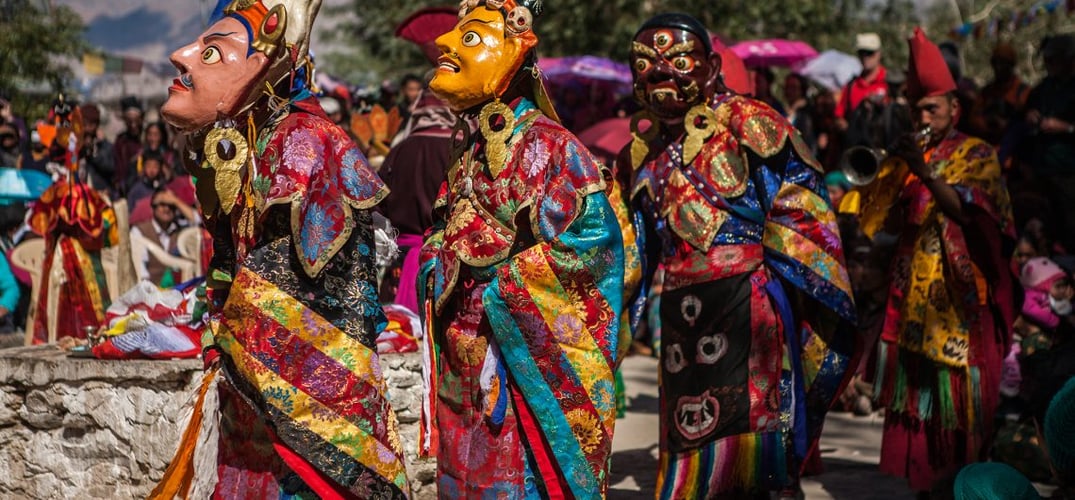A Guide to the Hornbill Festival
Tucked away in one of the farthest northeastern parts of India, Nagaland is celebrated for its rich traditional ethos with a vivid mix of colourful attires, numerous dialects, indigenous tribes, and eclectic food, all inclusively embraced by the affability of its people. Its vast, raw natural beauty cuts through proud tribal societies, each with its distinct customs, philosophy, and history. Expectedly then, the ‘Land of Festivals’ artistic diversity is carried out through several galas and fetes, honouring the rich tapestry that holds and binds the state.
Paying homage to its many communities, Nagaland salutes its varied cultural milieu amidst great pomp and splendour, through a grand parade of colour, exuberance, and festivity. The most vibrant of these is the now illustrious Hornbill Festival, with its vivid display of Naga traditions through ancient songs and dances fused with contemporary musical beats reflecting the essence of Nagaland’s tribes.
Harbinger of Good Tidings: The hornbill is often described as a ‘strange’ black and white bird with a large curved bill with excellent hearing. Although different mythical legends abound about the enormous bird across Nagaland’s people, it is unanimously associated with the folklore of love, loyalty, valour, and death. Before the advent of Christianity in Nagaland in the 18th century, animist practices were followed and the hornbill was worshipped by the local populace. Often referred to as the ‘bird of paradise’ it was considered a symbol of good fortune and the sighting of the birds in winter signalled prosperity and peace.
Wars were fought over the hornbill, such as the over hundred years war between the Ao tribes of the Nokrang and Longkhum villages. The virtuosity of a Naga tribesman was measured according to the death of the bird – if it fell with its tail down first, destroying the prized pattern of the feathers and preventing any use of its plume, it indicated that the hunter was a coward. In such a scenario, even if the failed hunter fitted them to his hat, the feathers would pull apart and fall to the ground. However, if the bird fell with its head first with its quill intact, it implied the heroism of a huntsman who had proved he was a worthy warrior to adorn its feathers in his headgear.
Source: https://commons.wikimedia.org/wiki/File:Great_Hornbill_female.jpg
For the Sumi tribe, the Great Hornbill is symbolic of indissoluble love. Tragedy befell two paramours, Kivigho and Kahuli, en route to their native village. Kivigho climbs a tree to get fruit for his lady love when the branches snap, trapping him. Unable to get down he gradually turns into a hornbill whose feather falls on the lap of a distraught Kahuli. She treasures the fallen fin, her entire life, in his memory. Today, however, it is worn by ‘common’ men and women in their ornaments, headpieces, and shawls to showcase the majestic Naga heritage. Different ways of wearing the hornbill feathers have distinct meanings. Additionally, the birds are thought to be monogamous making them the ideal emblem of eternal love and devotion.
The Hornbill Festival: A Peephole into Nagaland’s Ethnic Ethos
The Great Hornbird is synonymous with Nagaland’s myriad cultural and social mores, seeping deep into the psyche of its inhabitants and is intimately linked with the identity of the Naga people. It unilaterally represents both the similarity and uniqueness of all tribes across Nagaland. The revered bird is emblematic of the Naga way of life as depicted through folklore, music, and dance.
Background: An annual event held from the 1st to the 10th of December, organised by the state departments of tourism, arts, and culture, the Hornbill Festival was initially held in the year 2000.
A tourism event aimed to protect, preserve, revive, and nourish Nagaland’s aesthetic and folk abundance, it captures the pivotal elements of the primary tribes and sub-tribes of the region, under one roof. It offers a unique introduction to the state’s rich diversity. The secondary objective of the festival was to encourage inter-tribal exchanges. Additionally, the festival helps promote tourism in Nagaland, with tourists experiencing a slice of Naga life through food, dance, music, and customs. Furthermore, distressing statistics reflected the growing danger of the venerated hornbill being endangered, raising an alarm for the local people. The Hornbill Festival pays a rich tribute to the much-admired bird.
Held close to the capital of Nagaland, Kohima, in Kisama, the Naga Heritage Village witnesses a throng of people from across the world eager to observe and absorb the cultural abundance of the small state.

-1.png?height=500&name=Untitled%20design%20(14)-1.png)

